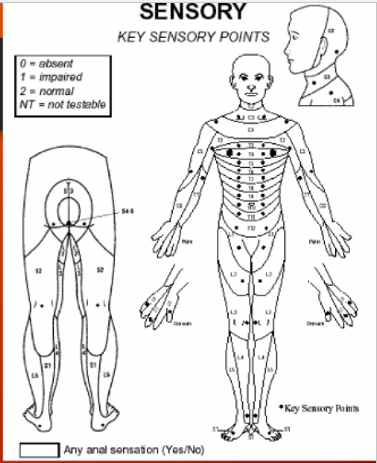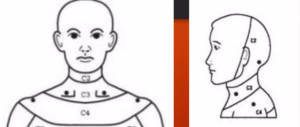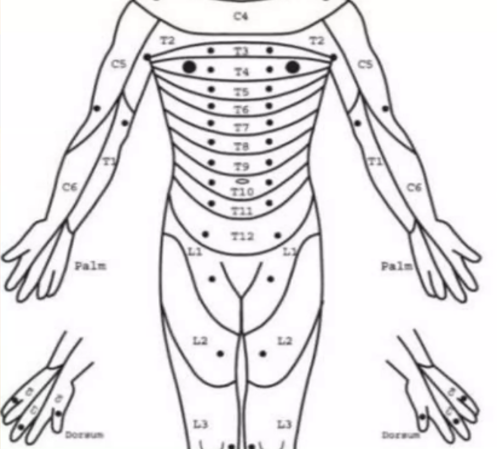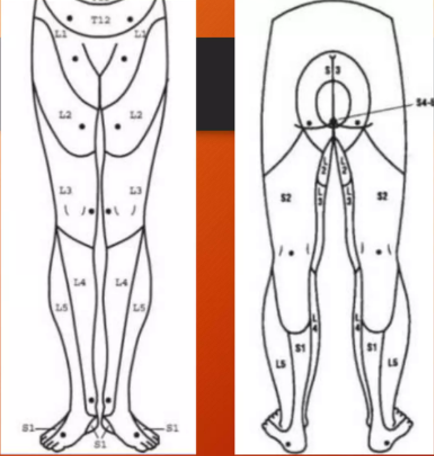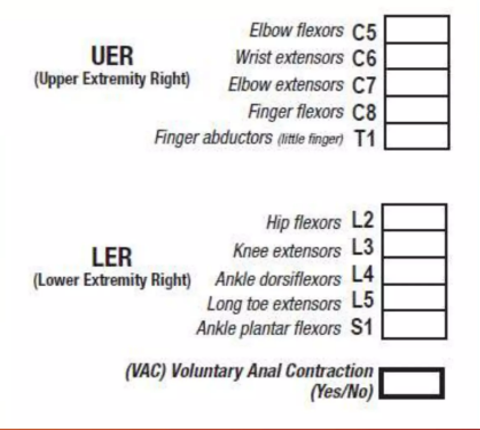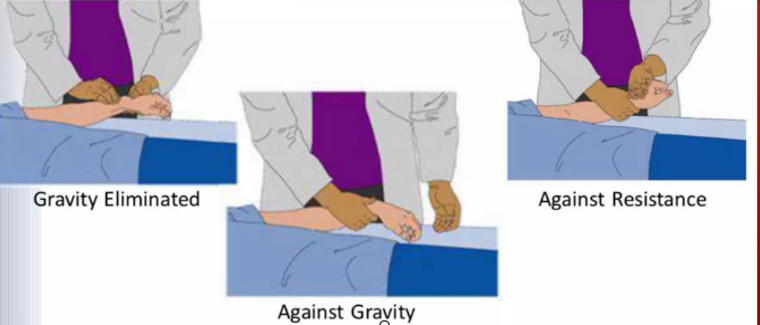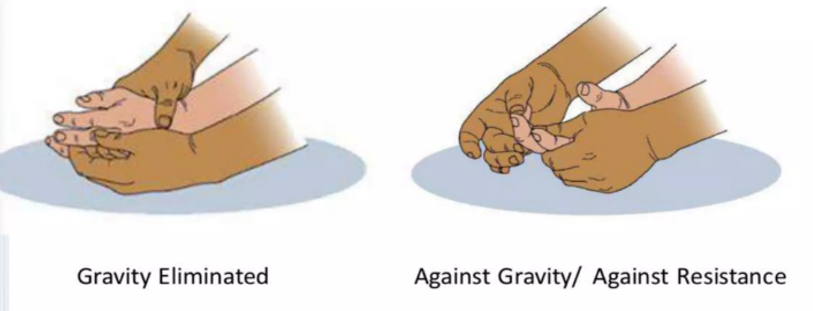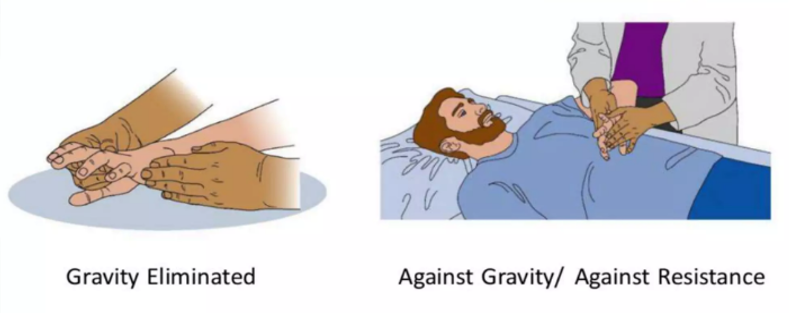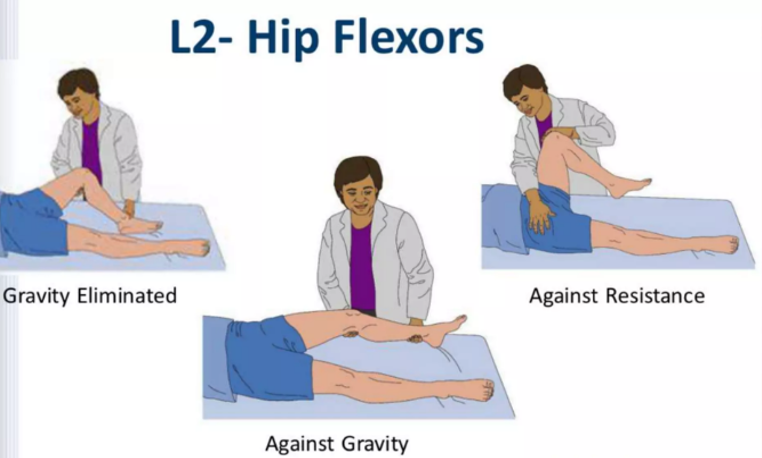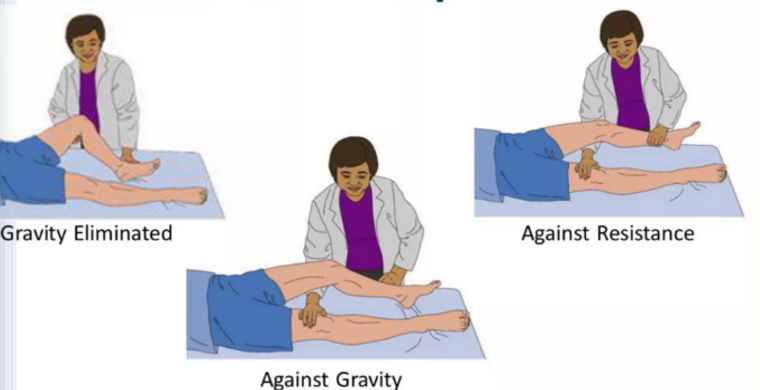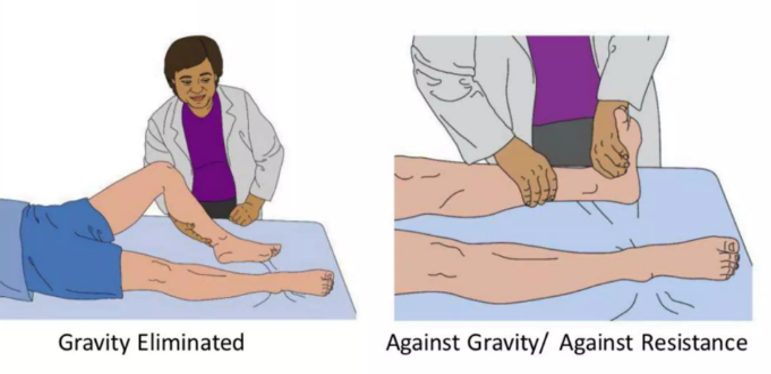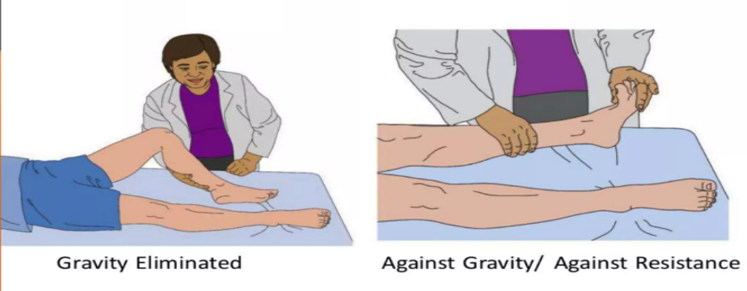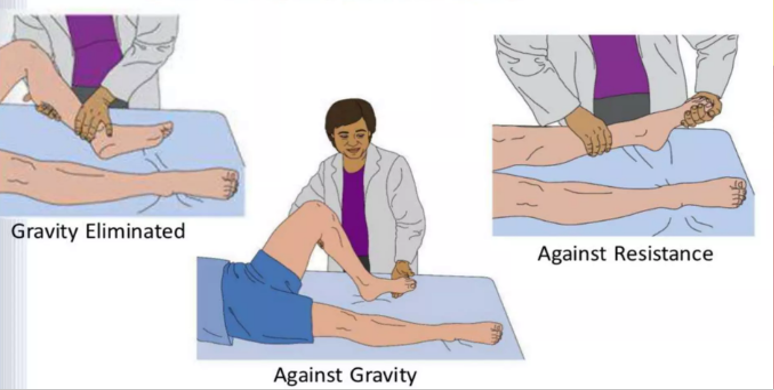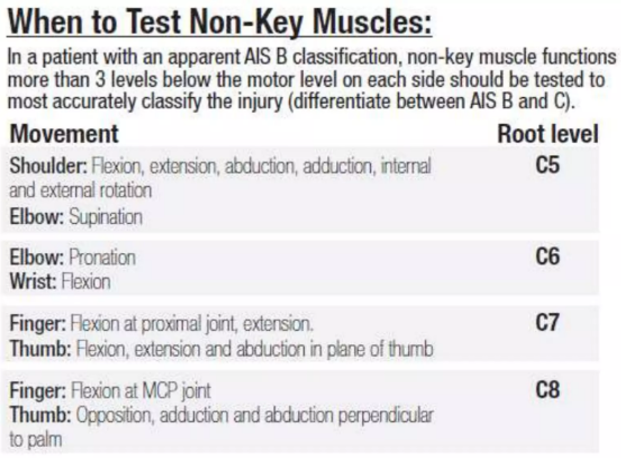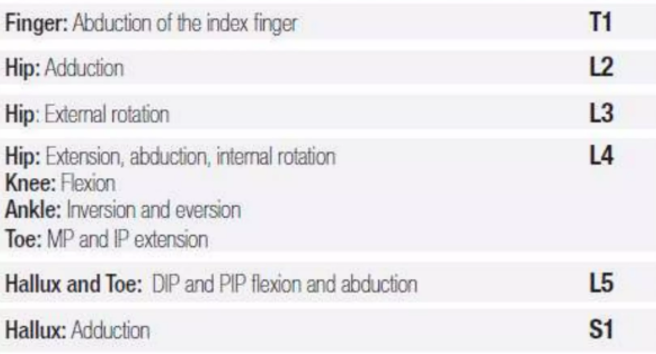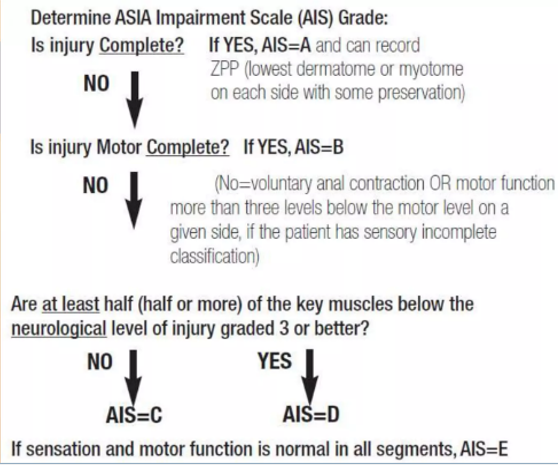The American Spinal Injury Association (ASIA) impairment scale describes a person’s functional impairment as a result of a SCI. This scale indicates how much sensation a person feels after light touch and a pinprick at multiple points on the body and tests key motions on both sides of the body.
ASIA measures:
- NEUROLOGICAL LEVEL
- SENSORY LEVEL
- MOTOR LEVEL
- SENSORY SCORE (pinprick and light touch)
- MOTOR SCORE
- ZONE OF PARTIAL PRESERVATION
Components of the Test
Main Parts of Examination
1) Manual Muscle Power Testing
2) Light Touch sensation
3) Pinprick Sensation
The lowest level of Motor Control
– Voluntary Anal Contraction
Lowest level of Sensation
– Deep Anal Pressure
Explaining the examination to your PATIENTS
This is not a fun exam
- Uncomfortable
- Confusing
- Requires patience
Timing of the Examination
- The initial examination should be done in EMERGENCY DEPARTMENT for Traumatic Spinal Cord Injury
- Attempt to determine the motor level, sensory level, completeness of injury, and AIS score
- However, it is difficult to obtain complete and reliable results in ED
- Traumatic Brain Injury
- Pain
- Respiratory Failure
- Shock
- Cognitive Changes
- Drugs
Sensory
Key point in each of the 28 dermatomes (from C2 to S4-S5) on the right and left sides.
Two aspects of sensation are examined:
- Light touch
- Pinprick (sharp-dull discrimination)
LIGHT TOUCH
- Wisp cotton
- Applied lightly.
- Stroke across skin. Not exceed 1 cm
- Done with eyes close
PIN PRICK
- Standard safety pin
- Pointed end for sharpness
- Rounded end for dullness
- Apply light pressure without moving the pin after the point of contact
Sensory Test of Anal Region
- S4-S5 dermatome
- Perianal Sensation
- Deep Anal Sensation
Sensory Grading
0 =absent
1= impaired (partial or altered appreciation including hyperesthesia)
2=normal
NT = not testable
Anal Exam
Very Important Part to Test!
Voluntary Anal Contraction
-Insert a finger into the rectum, and ask the patient to contract the anus (like holding in a BM), and release. Repeat several times to confirm voluntary contraction
Deep Anal Pressure
-With the finger still in the rectum, ask the patient which direction you are applying pressure- towards the head, towards the feet, towards the right side, or left side.
Should show consistent differentiation between directions
Use Gloves and Lube
Motor
Key Muscles Functions
- 10 paired myotomes
- Upper Limb C5-T1
- Lower Limb L2-S1
Represent each respective spinal cord segment
Read More About Maigne’s Syndrome
Manual Muscle Testing Grading
Positioning for motor examination
- Neutral position for Grade 3 testing
- Strategically eliminate gravity for Grade 2 testing
- When testing for Grades 4 and 5, the muscle is positioned in a manner that partially activates the muscles
- The patient is instructed to maintain that position
- C6 Wrist in full extension
C5-Biceps
C6-Wrist Extensor
C7-Triceps
C8-Finger Flexors (DIP)
T1-Small Finger Abductor
L2-Hip Flexors
L3-Quadriceps
L4-Dorsiflexors
L5-Great Extensor Toe
S1-Plantar Flexors
ASIA Impairment Scale Classification
1) Determine sensory level for right and left side
- The lowest level with a 2 (normal) for both pinprick and light touch where every level higher also 2
- The sensory level may be different on the left and right sides
2) Determine motor levels for the right and left sides
- The lowest level where the muscle grade is at least a 3, with all muscles above graded as a 5
- In regions where there is no myotome to test, the motor level is presumed to be the same as the sensory level.
3) Determine the neurological level of injury
- The highest level of the 4 individual levels
4) Determine whether the injury is Complete or incomplete. If complete AIS Grade = A
1) Defined by the presence/absence of sacral sparing
2) If NO voluntary anal contraction AND all S4-5 sensory scores are 0 AND there is NO deep anal pressure then the injury is complete
3) NOOOON Sign
4) Determine ASIA impairment Scale grade
- A = Complete.
- B = Sensory incomplete.
- C = Motor incomplete.
- D = Motor incomplete.
- E=Normal.
5) Determine ASIA impairment Scale grade
A = Complete.
B = Sensory incomplete.
C = Motor incomplete.
D = Motor incomplete.
E = Normal.
6) If A is ruled out, is the injury Motor incomplete?
(Do they get out of “B”???)
– Preservation of motor function is defined by
- Presence of voluntary anal contraction
OR
- Motor movement greater than three levels below the motor level on that side of the body
– (may use non-key muscle groups)
– If both of these are absent, AIS Grade = B
7) If B is ruled out, how incomplete is the motor function?
– Are at least half of the key muscles below the neurological level of injury graded 3 or better?
– If no, AIS Grade = C
– If yes, AIS Grade = D
About Authors
Dr. Muhammad Mahmood Ahmad is a Spinal as well as an Orthopedic Surgeon with over 14 years of experience currently practicing at Razia Saeed Hospital, Multan.


